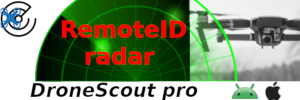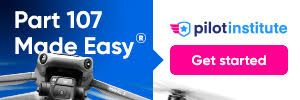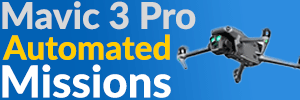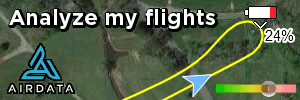- Joined
- Aug 19, 2020
- Messages
- 168
- Reactions
- 128
- Location
- Plainfield, New Hampshire, USA
- Site
- drone-artist.com
After seeing a DJI Air 3 range test video recently, I contacted the UAS Support Center to ask if it is indeed legal to extend flights from the pilot/control operator by using spotters. The FAA's response was unequivocal:
-------------------------------------------------------------------------------------------
"§ 107.31(b) states:
"Throughout the entire flight of the small unmanned aircraft, the ability described in paragraph (a) of this section must be exercised by either:
(1) The remote pilot in command and the person manipulating the flight controls of the small unmanned aircraft system; or
(2) A visual observer."
The Preamble specifically defines the term visual observer (with my emphasis):
"Accordingly, this rule will define visual observer as a person who assists the remote pilot in command and the person manipulating the flight controls of the small UAS (if that person is not the remote pilot in command) to see and avoid other air traffic or objects aloft or on the ground." Note the defined role is to assist in see and avoid, not to extend the range of operation.
Further, the Preamble states (with my emphasis):
"Allowing remote pilots to extend their visual line of sight through the use of one or more visual observers may introduce new hazards into the operation. As discussed in the next section of this preamble, the visual observer’s role in the operation is limited to simply maintaining visual line of sight and communicating what he or she sees to the remote pilot. Allowing “daisy chaining” of visual observers to fly the unmanned aircraft beyond line of sight of the remote pilot in command would result in a delay in the remote pilot’s reaction time because the visual observer would have to verbalize any hazard and the remote pilot would be unable to look up and directly see the situation. Instead, the remote pilot would have to respond to the hazard by formulating and executing a maneuver based on his or her understanding of the information received from the visual observer rather than a direct visual perception of the hazard.
Because a delay in reaction time may introduce new hazards into the operation, this rule will retain the requirement that the remote pilot in command and the person manipulating the flight controls of the small UAS (if that person is not the remote pilot in command) must be able to see the small unmanned aircraft throughout the entire flight.
As explained earlier, the visual-line-of-sight framework requires the remote pilot in command, the person manipulating the flight controls of the small UAS, and the visual observer to always have visual-line-of-sight capability. The visual observer can exercise this capability instead of the remote pilot in command and person manipulating the flight controls of the small UAS (if that person is not the remote pilot in command), but under this rule, everyone must have the visual-line-of-sight capability, even if they are not exercising it."
Bottom line...Part 107 specifically prohibits using a VO to extend VLOS."
-----------------------------------------------------------------------------
I had several additional emails back and forth with them regarding the language ambiuity of the actual rule, and the references to the "preamble", which I'd never heard of. Nevertheless, their position is perfectly clear as evidenced by the last sentence.
-------------------------------------------------------------------------------------------
"§ 107.31(b) states:
"Throughout the entire flight of the small unmanned aircraft, the ability described in paragraph (a) of this section must be exercised by either:
(1) The remote pilot in command and the person manipulating the flight controls of the small unmanned aircraft system; or
(2) A visual observer."
The Preamble specifically defines the term visual observer (with my emphasis):
"Accordingly, this rule will define visual observer as a person who assists the remote pilot in command and the person manipulating the flight controls of the small UAS (if that person is not the remote pilot in command) to see and avoid other air traffic or objects aloft or on the ground." Note the defined role is to assist in see and avoid, not to extend the range of operation.
Further, the Preamble states (with my emphasis):
"Allowing remote pilots to extend their visual line of sight through the use of one or more visual observers may introduce new hazards into the operation. As discussed in the next section of this preamble, the visual observer’s role in the operation is limited to simply maintaining visual line of sight and communicating what he or she sees to the remote pilot. Allowing “daisy chaining” of visual observers to fly the unmanned aircraft beyond line of sight of the remote pilot in command would result in a delay in the remote pilot’s reaction time because the visual observer would have to verbalize any hazard and the remote pilot would be unable to look up and directly see the situation. Instead, the remote pilot would have to respond to the hazard by formulating and executing a maneuver based on his or her understanding of the information received from the visual observer rather than a direct visual perception of the hazard.
Because a delay in reaction time may introduce new hazards into the operation, this rule will retain the requirement that the remote pilot in command and the person manipulating the flight controls of the small UAS (if that person is not the remote pilot in command) must be able to see the small unmanned aircraft throughout the entire flight.
As explained earlier, the visual-line-of-sight framework requires the remote pilot in command, the person manipulating the flight controls of the small UAS, and the visual observer to always have visual-line-of-sight capability. The visual observer can exercise this capability instead of the remote pilot in command and person manipulating the flight controls of the small UAS (if that person is not the remote pilot in command), but under this rule, everyone must have the visual-line-of-sight capability, even if they are not exercising it."
Bottom line...Part 107 specifically prohibits using a VO to extend VLOS."
-----------------------------------------------------------------------------
I had several additional emails back and forth with them regarding the language ambiuity of the actual rule, and the references to the "preamble", which I'd never heard of. Nevertheless, their position is perfectly clear as evidenced by the last sentence.










